

As a student or a professional who wants to make continuous progress, we all hope to learn efficiently and improve our learning efficiency. However, many people encounter various problems when learning, such as not being able to learn, not being able to remember, forgetting what they have learned, etc. In fact, these are all caused by not mastering the learning method. Today, we will use the ProcessOn drawing tool to sort out some tips for efficient learning for you, hoping to help you improve your learning efficiency !
Learning without a goal is like sailing without a compass, and it is easy to get lost. Setting clear learning goals can help you stay focused in learning and know what results you should achieve at each stage. Many people often only know that they need to learn, but they don’t know what to learn or how to learn. Therefore, clarifying learning goals is the first step to efficient learning.
When setting goals, it is recommended that you use the SMART principle: Specific, Measurable, Achievable, Relevant, Time-bound. For example, if you want to improve your English vocabulary in a week, your goal can be set as "learn 50 new words every day and review the vocabulary of the previous day."

Efficient learning is not just about spending time, it is also important to learn how to allocate study time. Everyone's learning efficiency is different throughout the day. Some people are most energetic in the morning, while others are more efficient at night. So we need to allocate study time reasonably according to our own situation.
A common and efficient learning method is the "Pomodoro Technique". You can set a 25-minute study period, focus on studying for 25 minutes, then take a 5-minute break. After four 25-minute periods, take a longer break. This way of allocating time can keep the brain focused and avoid fatigue caused by long-term study.
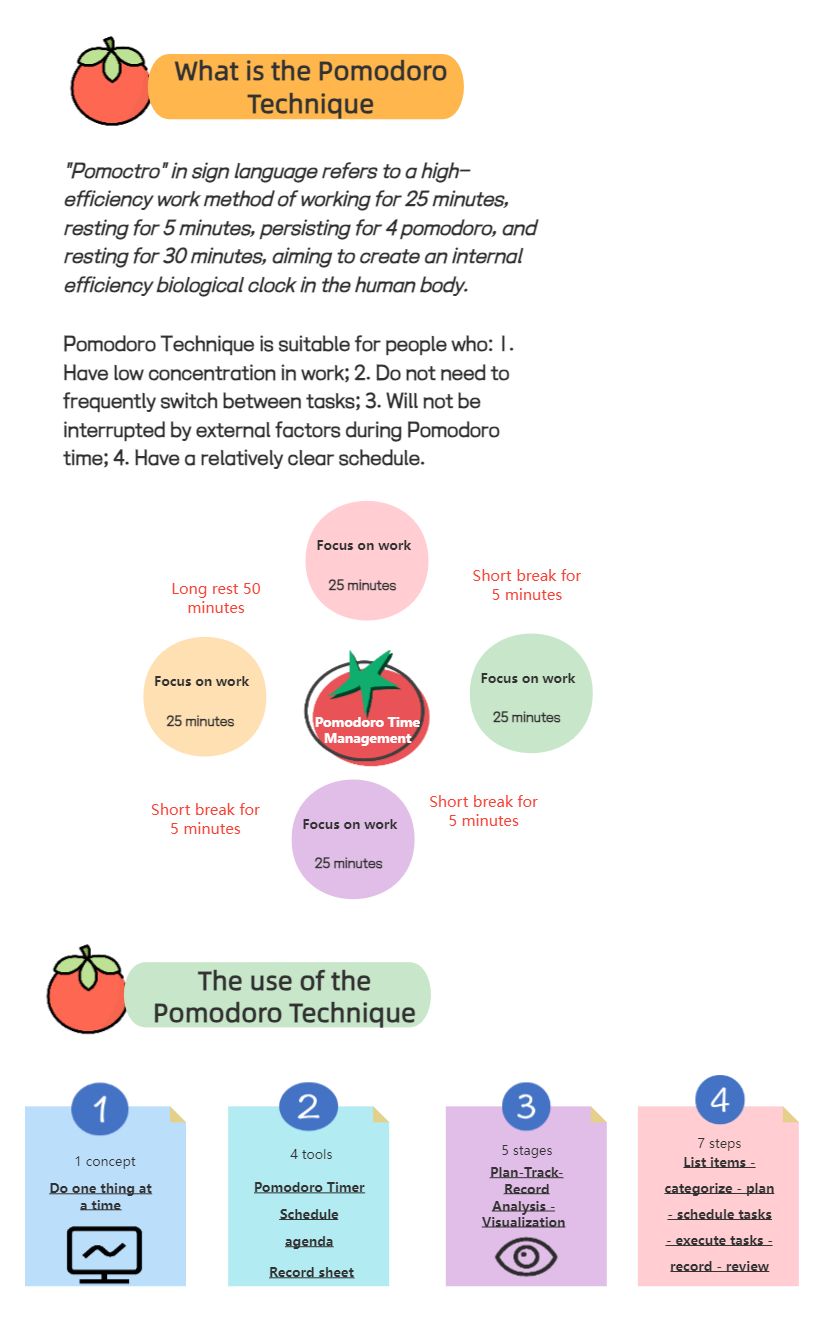
In addition, it is also very important to set aside a fixed period of time every day to study, which helps to develop good study habits and improve learning efficiency.
Many people just passively receive information when learning, which is often inefficient. Passive learning means that you just read, listen or browse materials without deep thinking and interaction. Active learning means that you actively participate in thinking, summarizing and applying knowledge during the learning process.
Active learning can be done in several ways:
Take notes: When studying, don’t just listen or watch, take notes and summarize what you have learned. This will help deepen your understanding and memory.
Ask yourself questions: When you learn a piece of knowledge, you can ask yourself "What does this content talk about?" "How does this concept relate to previous knowledge?" Ask yourself questions to verify whether you have truly mastered what you have learned.
Practical application: Applying what you have learned is the key to efficient learning. You can apply what you have learned by doing exercises, simulations, and participating in projects. This will help you better consolidate and understand the knowledge points.
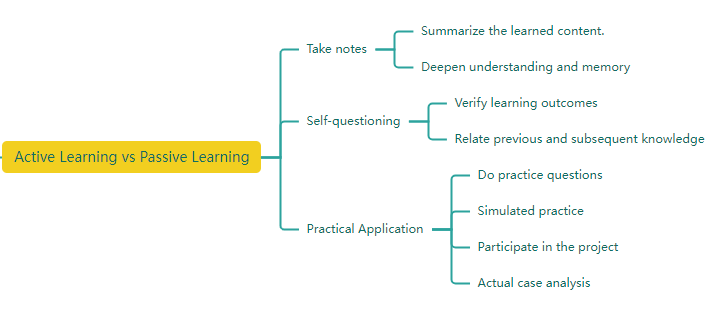
Active learning vs passive learning
Learning methods vary from person to person, and everyone has a different learning style, so you need to find the learning method that suits you best. Some people are suitable for visual learning (looking at pictures, watching videos), some are suitable for auditory learning (listening to explanations, recordings), and some are suitable for hands-on learning.
Here are some learning methods you can try:
Mind map: For people who like visual learning, mind map is a very effective tool. It can help you systematize and visualize complex information, making it easier for you to understand and remember.
Here we recommend using ProcessOn to draw mind maps, which has a low entry barrier and is easy to operate. At the same time, ProcessOn supports mind maps and outline notes, and the mind map and outline note modes can be converted to each other. The knowledge points recorded in outline notes/mind maps can be directly switched to another mode for later review.
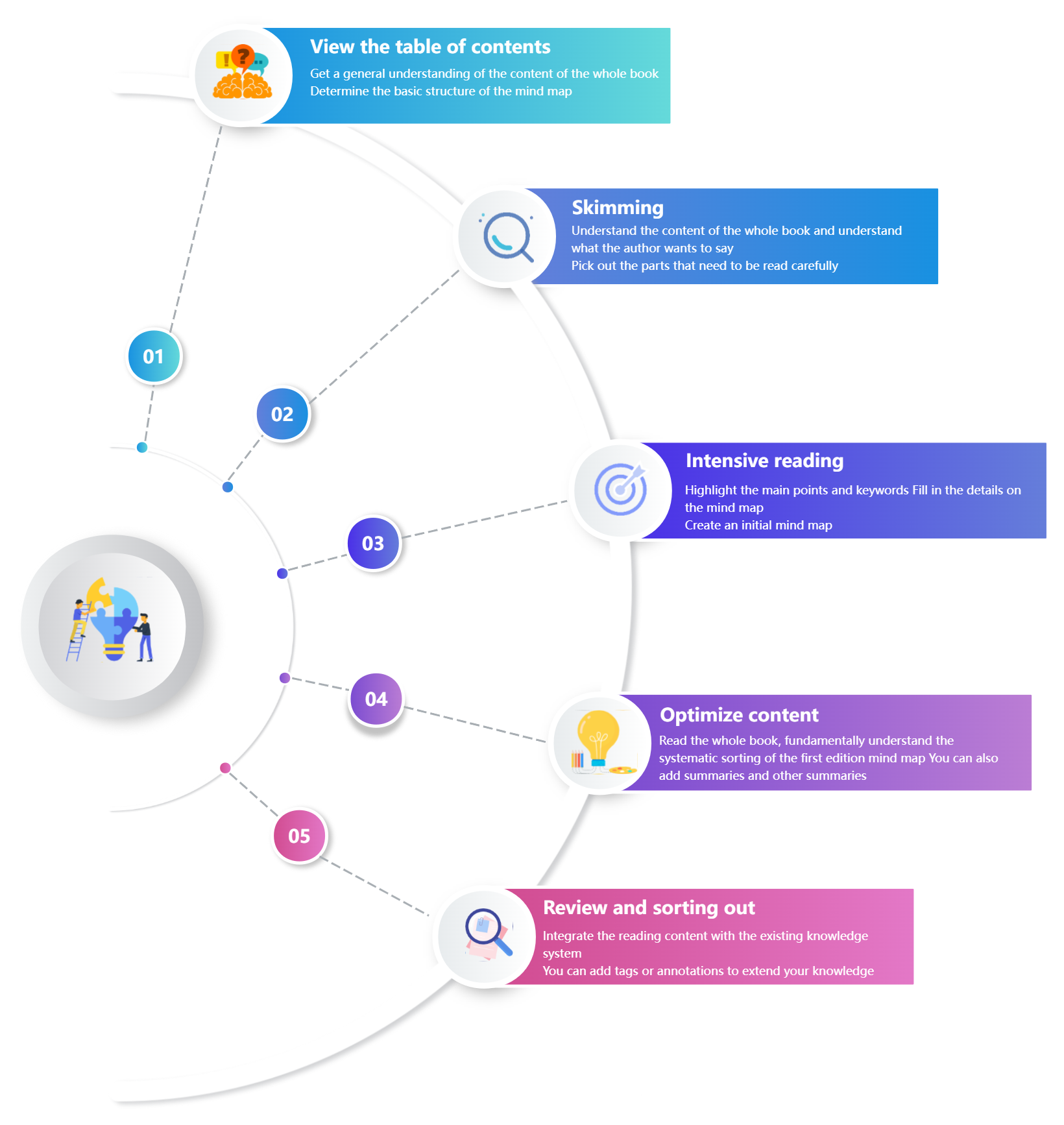
Retelling: For language learning or memory-based learning tasks, retelling is very effective. You can try to speak out what you have learned in your own words, so that you can test whether you have really mastered the knowledge.
Collaborative learning: Learning with others can inspire each other and share each other's knowledge and insights. This interactive learning can help you understand what you learn more deeply.
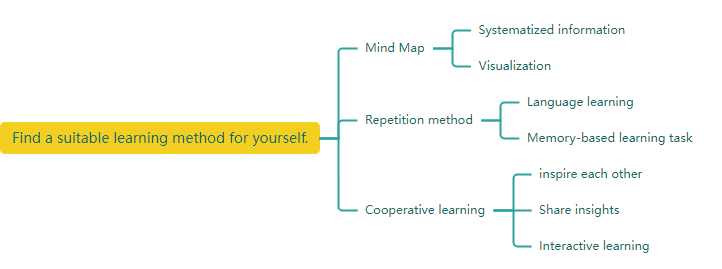
Find a learning method that works for you
Our brain will feel tired after studying for a long time, so maintaining proper exercise and rest is an important factor in improving learning efficiency. Maintaining a certain amount of exercise every day can promote blood circulation and help the brain function better. Sufficient sleep is an important moment to consolidate memory. During sleep, the brain will organize and consolidate the learning content.
Therefore, it is recommended to do some relaxing exercises after studying every day, such as walking, yoga, etc., so that both the body and the brain can be properly relaxed. In this way, you will feel more focused and your efficiency will be improved in the following study.
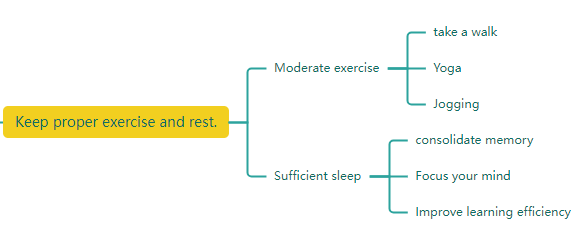
Maintain adequate exercise and rest
The learning process is not just about learning new content, but also about reviewing it regularly. The reason why many people forget what they have learned is that they lack a systematic review schedule. The Ebbinghaus forgetting curve shows that humans forget new information very quickly. If you don't review it in time, you will forget most of what you have learned in a short period of time.
In order to avoid forgetting, you can use the "interval review method", that is, review after a period of time after learning a section of content. The frequency of review can be the first review within 24 hours, the second review after a week, and the third review after a month. In this way, you can remember the knowledge you have learned more firmly.
In addition, you can use some review tools, such as memory card software like Anki, which can automatically arrange review time according to your memory situation, making your review more efficient.
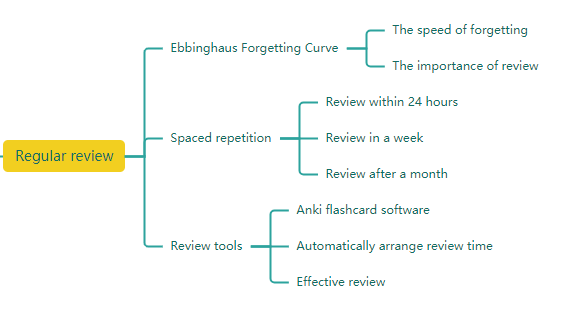
Efficient learning depends not only on time investment, but also on the scientific and rational learning methods. By setting clear learning goals, allocating reasonable learning time, taking the initiative to learn, finding a learning method that suits you, keeping exercise and rest, and reviewing regularly, you can greatly improve your learning efficiency.
I hope the learning tips I shared today can be helpful to everyone. Follow the ProcessOn Knowledge Community to get more learning tips and useful information!